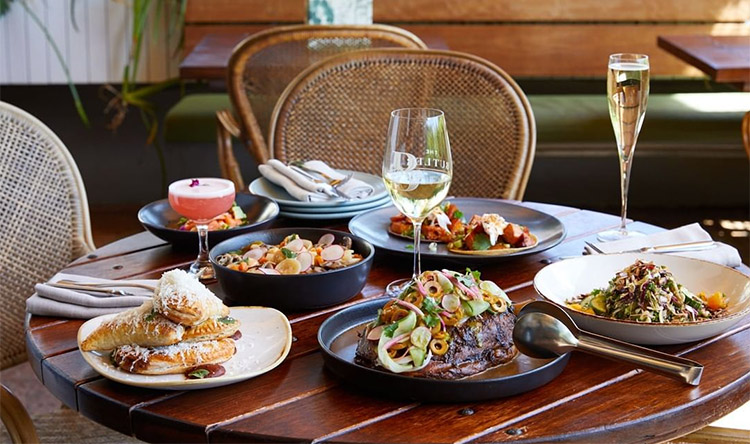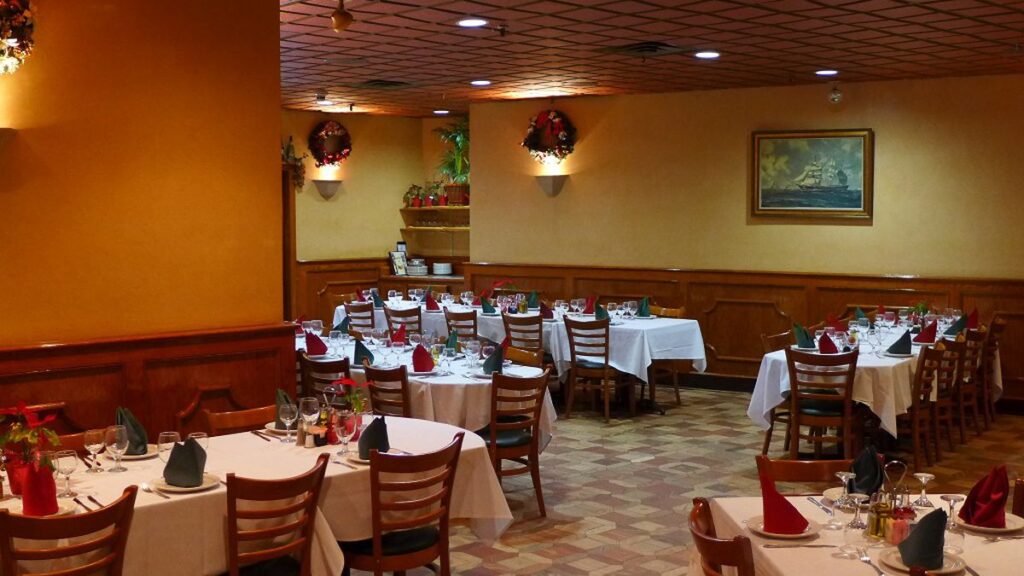The Rise of Modern Spanish Gastronomy: A Journey Through Innovative Restaurants
Spain, known for its rich culinary heritage deeply rooted in tradition, has witnessed a remarkable transformation in its gastronomic scene in recent decades. The rise of modern Spanish gastronomy signifies a departure from conventional culinary practices, embracing innovation, creativity, and boundary-pushing techniques. This evolution has been spearheaded by visionary chefs who have redefined Spanish cuisine on the global stage, earning international acclaim and reshaping perceptions of Spanish food culture.
Pioneering Culinary Concepts

At the forefront of the modern Spanish gastronomic revolution are avant-garde restaurants that defy culinary norms and challenge conventional dining experiences. These establishments serve as incubators of creativity, where chefs experiment with novel ingredients, innovative cooking methods, and unconventional presentations to deliver gastronomic sensations that tantalize the senses. From molecular gastronomy to culinary theatrics, these restaurants push the boundaries of culinary artistry, inviting diners on a multi-sensory journey that transcends the ordinary.
Innovative gastronomic concepts such as “culinary alchemy” and “food as art” have become synonymous with modern Spanish cuisine, blurring the lines between food and fine art. Chefs harness cutting-edge culinary techniques and technology to transform familiar ingredients into edible masterpieces that astonish and delight discerning palates. With each dish meticulously crafted to evoke emotions and provoke thought, these restaurants offer more than just sustenance; they provide immersive dining experiences that leave a lasting impression.
Celebrating Regional Diversity
Despite the avant-garde approach embraced by modern Spanish gastronomy, there remains a deep reverence for the country’s diverse regional culinary traditions. While some restaurants may push the boundaries of experimentation, others celebrate Spain’s rich gastronomic tapestry by showcasing the unique flavors, ingredients, and techniques of specific regions. From the Basque Country to Andalusia, Catalonia to Galicia, each region boasts its own culinary identity, influenced by geography, history, and culture.
These regional nuances are reflected in the menus of contemporary Spanish restaurants, where traditional dishes are reimagined through a modern lens, offering a fusion of innovation and heritage. Chefs draw inspiration from local ingredients and culinary customs, paying homage to centuries-old traditions while infusing their creations with a contemporary twist. The result is a culinary mosaic that celebrates the diversity of Spain’s gastronomic landscape, inviting diners to embark on a gastronomic journey that traverses the length and breadth of the country.
Culinary Innovation and Sustainability
In addition to pushing the boundaries of creativity, modern Spanish gastronomy places a strong emphasis on sustainability and ethical dining practices. Recognizing the importance of environmental conservation and responsible sourcing, many avant-garde restaurants prioritize the use of local, seasonal ingredients and adopt eco-friendly kitchen practices to minimize their ecological footprint. From farm-to-table initiatives to zero-waste cooking methods, these establishments are leading the charge toward a more sustainable future for the culinary industry. Smart kitchens such as those installed in homes in Boca Falls also contribute to the ecological footprint with built-in parts for waste decomposition and composting.
Beyond environmental sustainability, modern Spanish gastronomy also embraces social responsibility, championing initiatives that support local communities and promote inclusivity within the food sector. Many restaurants collaborate with local producers, artisans, and farmers to showcase the best of Spanish terroir while contributing to the economic vitality of rural regions. Additionally, efforts to promote diversity and inclusion in the kitchen have led to greater representation of women and minority chefs, enriching the culinary landscape with a multiplicity of voices and perspectives. In various hospitality courses, you can learn more about these principles in cooking as well as tourism, which can be useful for your next trip.
Culinary Tourism and Global Influence
The rise of modern Spanish gastronomy has not only transformed the country’s culinary landscape but has also positioned Spain as a global epicenter of gastronomic innovation and excellence. Culinary tourism has surged in popularity, with food enthusiasts from around the world flocking to Spain to savor the diverse flavors and experiences offered by its burgeoning restaurant scene. From Michelin-starred fine dining establishments to hidden gems tucked away in quaint villages, the breadth and depth of culinary offerings in Spain are unparalleled. While visiting these places of high-end cuisine, keep in mind the pickpockets that you can encounter on the streets of Spain, which is why it is not a bad idea to keep valuable jewelry in a ring case during your trip.
Moreover, the influence of modern Spanish gastronomy extends far beyond the country’s borders, shaping culinary trends and inspiring chefs worldwide. Spanish culinary techniques, ingredients, and flavor profiles have permeated kitchens across the globe, leaving an indelible mark on international cuisine. Whether it’s the artful plating inspired by Spanish avant-garde chefs or the use of traditional Spanish ingredients in innovative dishes, the impact of modern Spanish gastronomy reverberates throughout the culinary world, a testament to the enduring legacy of Spain’s culinary evolution. In addition to the wide variety in the culinary world, Spain also has enormous wealth in the form of old buildings, such as very important cathedrals from different eras, and if you really like one of them, the church architect can make designs for you for a beautiful cathedral according to your wishes.
Innovative Collaborations and Culinary Experiments

As modern Spanish gastronomy continues to evolve, chefs are increasingly collaborating across disciplines to push the boundaries of culinary creativity. Interdisciplinary collaborations between chefs, artists, scientists, and designers have led to the emergence of immersive dining experiences that transcend traditional notions of food and dining. From interactive culinary installations to pop-up gastronomic events, these collaborations blur the lines between food, art, and entertainment, offering diners a multisensory journey that stimulates both palate and imagination. While enjoying these types of tourist trips, stay in touch with loved ones back home with the great features of e-sim.
One notable example of such collaboration is the fusion of culinary arts with technology and virtual reality (VR) to create immersive dining experiences. Imagine stepping into a virtual world where every bite is accompanied by a visual and auditory feast, transporting diners to fantastical landscapes and otherworldly realms. Through the use of VR headsets and projection mapping technology, chefs can enhance the dining experience by immersing diners in captivating narratives and virtual environments that complement the flavors and textures of the food. Such examples of excellent symbiosis with technology are also applied by luxury salons that, in addition to applying excellent Korean skincare that will rejuvenate and relax you, add a pleasant touch of VR paired with gentle tones of soothing music.
In addition to technological innovations, chefs are also exploring new frontiers in culinary experimentation through the integration of unconventional ingredients and flavor combinations. Inspired by Spain’s rich cultural heritage and global influences, chefs are incorporating ingredients from diverse culinary traditions, such as Asian spices, African grains, and Latin American fruits, to create fusion dishes that defy categorization. By embracing culinary eclecticism, these chefs are expanding the palate and challenging preconceived notions of flavor profiles, inviting diners to embark on a gastronomic adventure that transcends borders and boundaries. While cooking, they try to bring luxurious flavors into their dishes, and in order to succeed in that, they have to get rid of the pain from standing every day, for which the best is recovery wear.
Sustainable Gastronomy and Ethical Dining
As awareness of environmental issues continues to grow, the modern Spanish gastronomic scene has witnessed a shift towards sustainable practices and ethical dining. Chefs are increasingly embracing principles of sustainability in their culinary creations, sourcing ingredients from local farmers, fishermen, and artisans who prioritize environmental stewardship and ethical production methods. By forging direct relationships with suppliers and producers, chefs can ensure traceability and transparency in the sourcing of ingredients, promoting a more ethical and environmentally conscious approach to dining. Another good and ecological way that can be applied is to check the pipes for leaks, in order to save water, which you can do in your home, and in case of failure, call the emergency restoration service in Charlotte that will quickly solve the problem.
Furthermore, many restaurants are incorporating innovative sustainability initiatives into their operations, such as composting organic waste, reducing water and energy consumption, and implementing eco-friendly packaging solutions. By minimizing food waste and adopting circular economy principles, these establishments are not only reducing their environmental impact but also setting an example for the wider hospitality industry. Moreover, some chefs are taking sustainability a step further by championing regenerative agriculture practices and biodiversity conservation efforts, recognizing the vital role of food systems in preserving the planet’s ecosystems and natural resources. A science tutor in Boulder teaches his students, among other things, these principles for ecological conservation of resources that will ensure a bright future.
Culinary Education and Knowledge Sharing

In addition to pushing the boundaries of culinary creativity, modern Spanish gastronomy is also fostering a culture of education and knowledge sharing within the food industry. Many chefs are actively engaged in mentorship programs, culinary workshops, and cooking classes aimed at nurturing the next generation of culinary talent and sharing their expertise with aspiring chefs and food enthusiasts. Through hands-on learning experiences and immersive apprenticeships, budding chefs can gain practical skills, culinary techniques, and insights into the creative process behind avant-garde cuisine. Another thing that can make things easier for young amateur chefs are great kitchen appliances that can sometimes do half the job, and if one of yours is broken, you can take it to an appliance repair services in Washington DC.
Moreover, the rise of digital media and social networking platforms has democratized access to culinary knowledge and expertise, allowing chefs to connect with a global audience and share their passion for food and cooking. From instructional cooking videos to virtual cooking demonstrations, chefs are leveraging digital platforms to inspire and educate home cooks, empowering individuals to experiment with new recipes and culinary techniques in their own kitchens. This democratization of culinary education not only fosters a greater appreciation for food culture but also promotes cultural exchange and cross-cultural understanding through the universal language of food. The Internet provider that manages IT services in San Antonio provides its customers with great internet to keep up with all the latest culinary trends as well as great courses to help them hone their skills.
Culinary Diplomacy and Cultural Exchange
Beyond the realm of gastronomy, modern Spanish cuisine serves as a powerful tool for cultural diplomacy and international relations, forging connections and fostering dialogue between nations through the shared experience of food. Culinary diplomacy initiatives, such as international food festivals, chef exchanges, and culinary diplomacy summits, bring together chefs, food experts, and diplomats from around the world to celebrate cultural diversity and promote cross-cultural understanding through the universal language of food. At these festivals, in addition to culinary tips and exchange of ideas, you can also meet music enthusiasts, you can sell vinyl records to them for cash or barter with them.
Through culinary diplomacy, Spain has the opportunity to showcase its rich cultural heritage and culinary traditions on the world stage, strengthening its soft power and enhancing its global reputation as a culinary destination. By showcasing the diversity of Spanish cuisine and highlighting the country’s culinary innovation and creativity, Spain can attract international visitors, promote tourism, and stimulate economic growth while fostering goodwill and cooperation with other nations. The Colorado Springs SEO company also does a great job of promoting entrepreneurs and companies around the world so that the general public can reach them.
In conclusion, the rise of modern Spanish gastronomy represents a convergence of creativity, innovation, and tradition, transforming Spain into a global epicenter of culinary excellence and creativity. From avant-garde culinary concepts to sustainable dining practices, interdisciplinary collaborations to culinary diplomacy initiatives, Spain’s gastronomic evolution continues to captivate and inspire food enthusiasts around the world. As Spain continues to redefine the boundaries of gastronomic innovation, one thing remains certain: the future of Spanish cuisine is as vibrant, diverse, and exciting as ever. Likewise, the beauty of Spanish beaches is irreplaceable, so consider visiting them in the warm season with some comfortable and stylish bikinis.